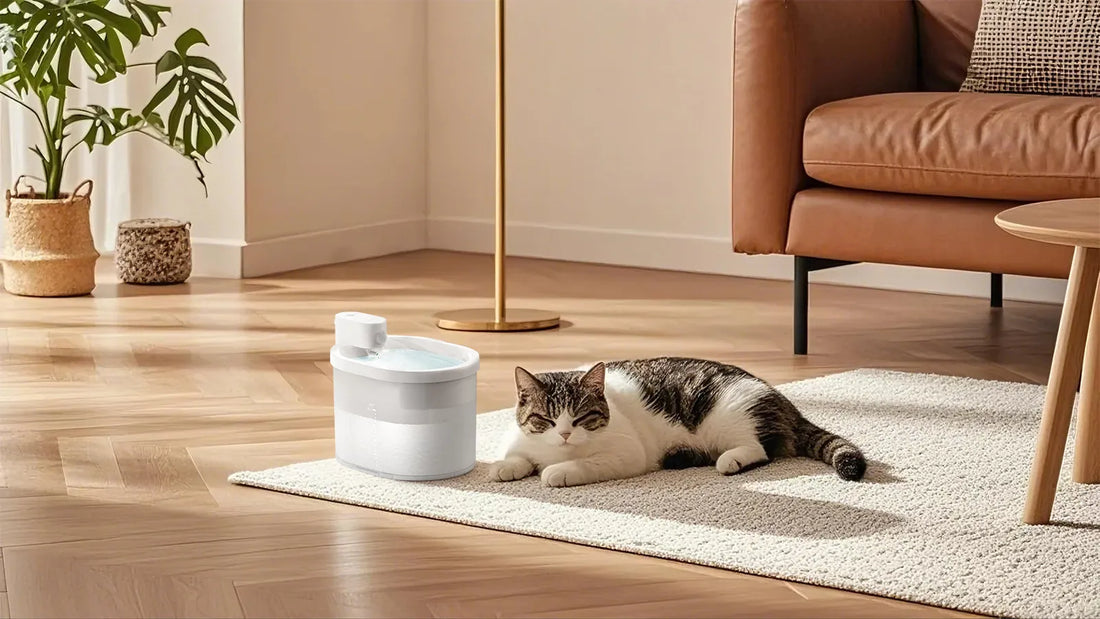Keeping your cat's ears clean is an essential part of their overall health and well-being. A cat ear cleaning solution is a vital tool in your pet care arsenal, helping to prevent infections, remove debris, and maintain optimal ear hygiene. In this comprehensive guide, we'll explore everything you need to know about cat ear cleaning solutions, from their benefits to step-by-step instructions for safe and effective use.
Why Is Cat Ear Cleaning Important?
Cats are naturally curious creatures, often exploring their environment with their ears exposed to dust, dirt, and other debris. Over time, this can lead to a buildup of wax and other particles, which may cause discomfort or even infections. Regular ear cleaning with a cat ear cleaning solution helps to:
- Prevent ear infections
- Remove excess wax and debris
- Detect potential ear issues early
- Maintain overall ear health
Neglecting your cat's ear hygiene can lead to serious complications, such as ear mites, bacterial infections, or even hearing loss. By incorporating a cat ear cleaning solution into your pet care routine, you can ensure your feline friend stays happy and healthy.
How to Choose the Right Cat Ear Cleaning Solution
Not all ear cleaning solutions are created equal. When selecting a cat ear cleaning solution, consider the following factors:
- Ingredients: Look for a solution that is gentle, non-irritating, and free from harsh chemicals. Natural ingredients like aloe vera or chamomile can soothe the skin and reduce inflammation.
- pH Balance: A solution with a pH balance designed for cats ensures it won't disrupt the natural environment of your cat's ears.
- Ease of Use: Opt for a product that comes with clear instructions and is easy to apply, especially if your cat is not accustomed to ear cleaning.
- Veterinarian Recommendation: Consult your vet for advice on the best cat ear cleaning solution for your pet's specific needs.
Always avoid using human ear cleaning products or alcohol-based solutions, as these can be too harsh for your cat's delicate ears.
Step-by-Step Guide to Cleaning Your Cat's Ears
Cleaning your cat's ears may seem daunting, but with the right approach, it can be a stress-free experience for both you and your pet. Follow these steps:
- Gather Supplies: You'll need a cat ear cleaning solution, cotton balls or gauze, and treats to reward your cat.
- Calm Your Cat: Choose a quiet, comfortable space and ensure your cat is relaxed. Speak softly and offer treats to create a positive association.
- Inspect the Ears: Gently examine your cat's ears for signs of redness, swelling, or discharge. If you notice anything unusual, consult your vet before proceeding.
- Apply the Solution: Hold the ear flap upright and apply a few drops of the cat ear cleaning solution into the ear canal. Avoid inserting the applicator too deeply.
- Massage the Base: Gently massage the base of the ear for 20-30 seconds to help the solution break down wax and debris.
- Wipe Away Debris: Use a cotton ball or gauze to wipe away the loosened debris from the outer ear. Avoid using cotton swabs, as they can push debris further into the ear canal.
- Reward Your Cat: Praise your cat and offer a treat to reinforce positive behavior.
Repeat this process as needed, but avoid over-cleaning, as this can irritate the ears. Most cats only require ear cleaning once a month, but consult your vet for specific recommendations.
Common Mistakes to Avoid
While using a cat ear cleaning solution is straightforward, there are some common mistakes pet owners should avoid:
- Using the Wrong Product: Always use a solution specifically designed for cats. Human products or alcohol-based solutions can cause irritation or damage.
- Over-Cleaning: Cleaning your cat's ears too frequently can strip away natural oils and lead to dryness or irritation.
- Ignoring Signs of Infection: If your cat shows signs of discomfort, such as scratching, head shaking, or discharge, consult your vet immediately.
- Using Cotton Swabs: Cotton swabs can push debris deeper into the ear canal and risk damaging the eardrum.
By avoiding these mistakes, you can ensure a safe and effective ear cleaning experience for your cat.
Tips for Maintaining Your Cat's Ear Health
In addition to regular ear cleaning, there are several steps you can take to maintain your cat's ear health:
- Regular Checkups: Schedule routine vet visits to monitor your cat's ear health and address any potential issues early.
- Monitor for Allergies: Allergies can contribute to ear problems, so keep an eye out for signs of irritation or inflammation.
- Keep Ears Dry: Moisture can create a breeding ground for bacteria and yeast. After baths or outdoor adventures, gently dry your cat's ears with a soft cloth.
- Provide a Balanced Diet: A healthy diet supports your cat's immune system, helping to prevent infections and other health issues.
By incorporating these tips into your pet care routine, you can help your cat maintain clean, healthy ears for years to come.
Your cat's ear health is a crucial aspect of their overall well-being, and a cat ear cleaning solution is an invaluable tool in your pet care toolkit. By understanding the importance of ear hygiene, choosing the right product, and following proper cleaning techniques, you can ensure your feline friend stays comfortable and healthy. Start incorporating these practices today and give your cat the care they deserve!













